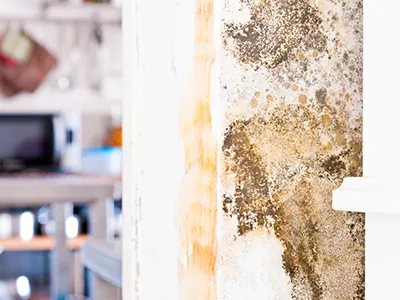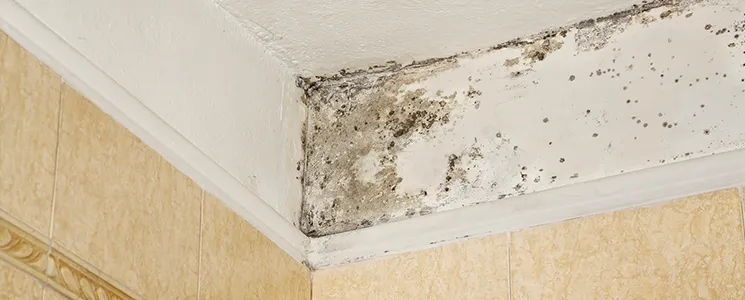Mould and mildew are both fungi that thrive in warm, moist areas of your home. But as our damp experts explain, there are differences that can help you prevent either from growing.
The texture and colour of a fungus are often the best indicators as to whether it’s mould or mildew. Mildew is often white, grey or yellow, with a fluffy texture, whilst mould is typically black or green. Mould is usually found on food like bread or cheese, with mildew more often found on walls or ceilings with high humidity, such as bathrooms or basements.
It’s not unusual to find mould on a wall or mildew on food, either. Mould can still grow in a room that is damp, such as a garage, and mildew can grow on vegetables like potatoes As such, it can be relatively difficult for an untrained individual to tell the difference between the two.

Mildew cleaner will often get rid of mildew with no problem at all. In most cases, it’s simple to scrub off with an instrument like a toothbrush, though it’s advised to bin that toothbrush as soon as you’ve used it.
Mould removal, however, is an issue that is best left to a professional mould removal company. Mould growth is more often than not part of an underlying damp problem that requires professional treatment. Often, DIY mould removal doesn’t get to the source of the problem and won’t prevent the mould from coming back.
At Croft Preservation, we recognise that not all mould is as obvious as a large stain on your wall and that identifying mould can be difficult. We offer damp survey services and can remove mould from your property with no fuss.

As experienced mould removers we have helped numerous clients across Dorset and Hampshire resolve their problems with fungi. We are perfectly positioned to advise you on whatever the situation requires and use only suitable products when carrying out our service. Contact us to book a damp survey today on 01202 737739.

